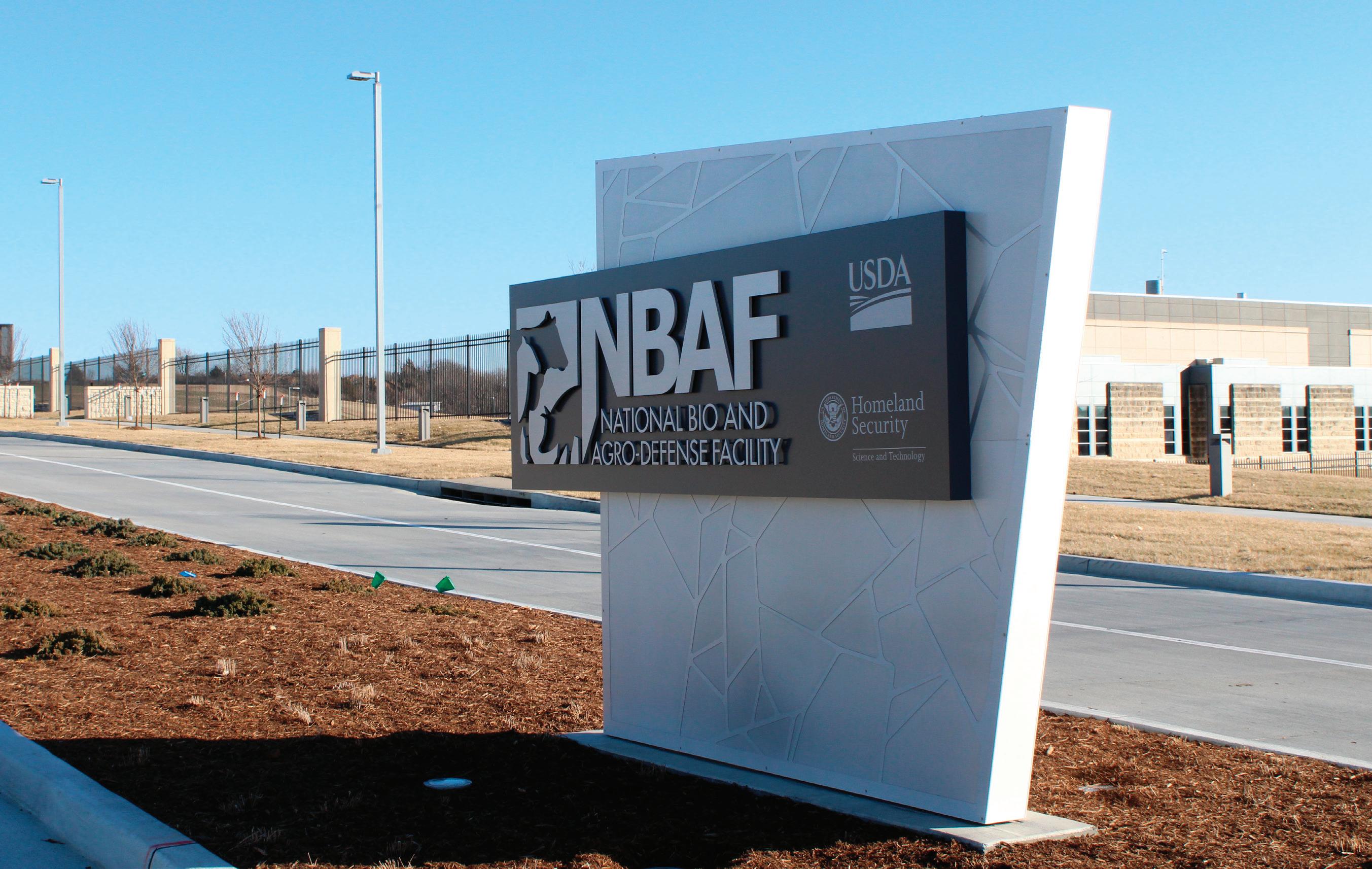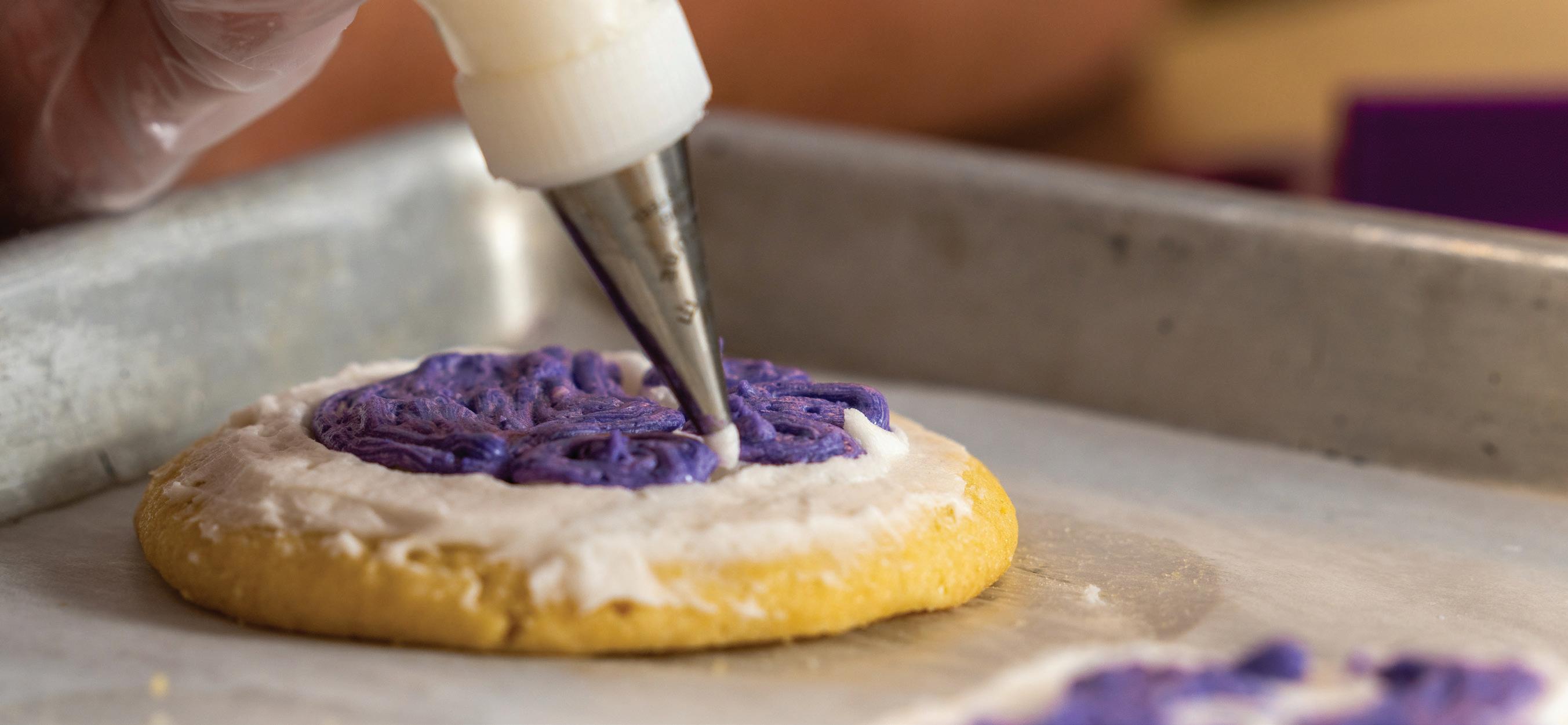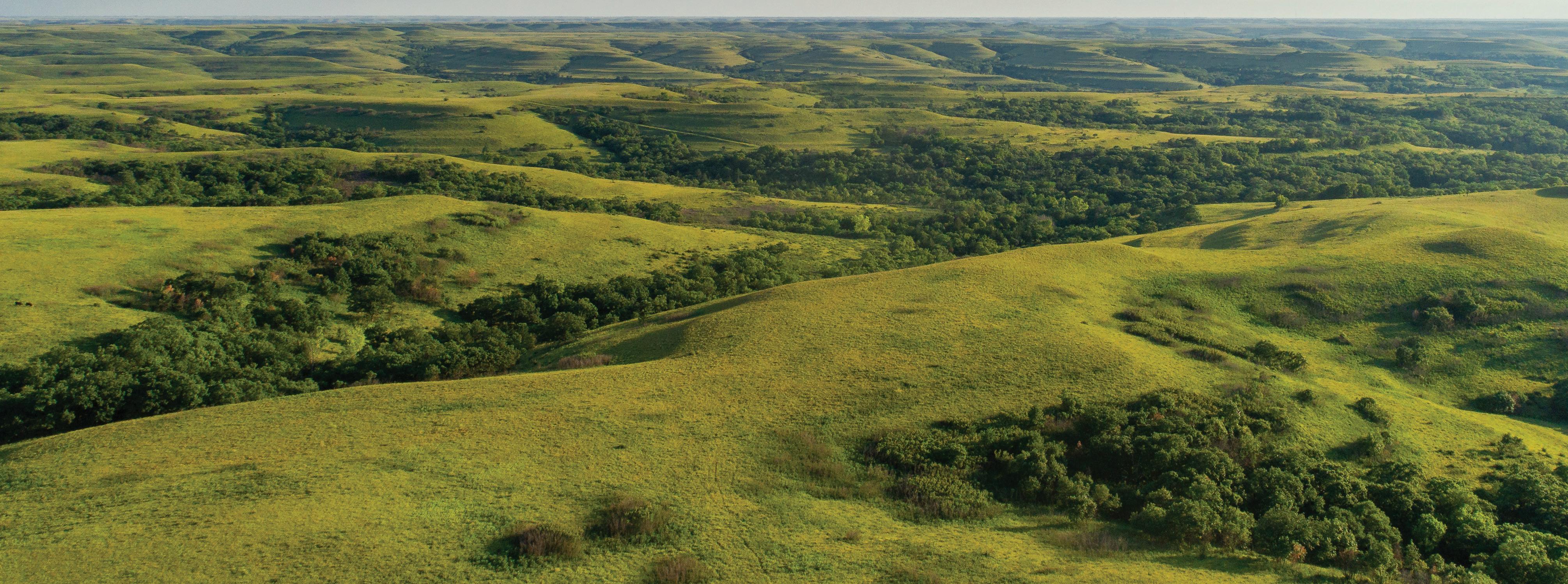The National Bio and Agro-Defense Facility, or NBAF, which will be owned and operated by the USDA, is adjacent to K-State’s Biosecurity Research Institute.
PROTECTING AGRICULTURE
Like a good neighbor, this next-generation federal facility will strengthen Manhattan’s agricultural legacy BY STEPHANIE JACQUES ’05, NBAF PUBLIC AFFAIRS SPECIALIST Behind tall secure fences, with impressively thick steel doors and multiple layers of reinforced concrete, is Kansas State University’s newest neighbor: The National Bio and Agro-Defense Facility, or NBAF. On more than 48 acres, NBAF sits adjacent to the university’s Biosecurity Research Institute and the College of Veterinary Medicine. The federal facility will add a new high-tech chapter in Manhattan’s history book and offer a variety of opportunities to those interested in protecting agriculture. Through this world-class science facility for large animal agricultural research, diagnostics and training, NBAF leadership has a vision of a safer and more resilient America. The facility’s mission
30
FA L L 2 0 2 1
PHOTOS COURTESY OF NBAF
is to protect the nation’s food supply, economy and public health from transboundary, emerging and zoonotic animal diseases — in line with many K-State priorities. Transboundary animal diseases, or foreign animal diseases, are those that could enter the U.S. from another country. Emerging diseases are ones that are new or not well known and zoonotic diseases normally affect animals, but can transfer to people. Protecting livestock and agricultural interests from these diseases also protects the economy. Agriculture, food and related industries contribute more than $1.1 trillion to the U.S. economy, according to the U.S. Department of Agriculture’s Economic Research Service. In addition, 11%
of jobs — about 22 million — have some ties to agriculture. The USDA’s Agricultural Research Service, or ARS, and Animal and Plant Health Inspection Service, or APHIS, will share responsibility for the $1.25 billion facility after the U.S. Department of Homeland Security, or DHS, is finished building it. When the USDA-owned facility is fully operational, about 400 federal employees will work to anticipate, prevent and mitigate risks to animal agriculture.
USDA HAS PROTECTING AGRICULTURE DOWN TO A SCIENCE Currently, the USDA’s foreign animal disease research, training and diagnostics includes African swine fever, classical swine fever and foot-and-












